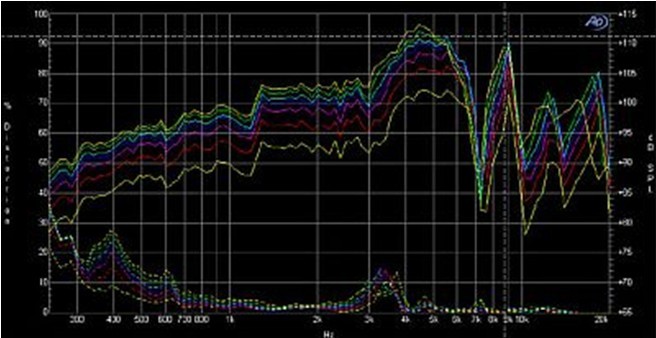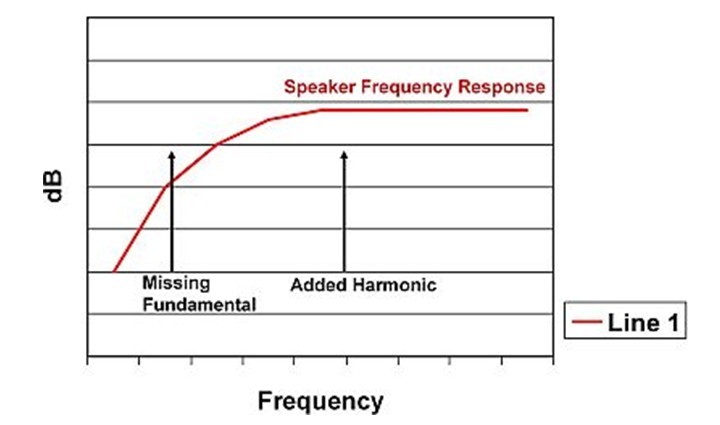Audio processing algorithms improve speaker quality
Modern smartphones are smart and powerful. Although the size of the phone varies from random to large, in general, an industry-leading device can package many features into a package of approximately 110x60x15mm.
This article refers to the address: http://
If the display and board are taken into account, there is not much room left for the speakers. Now, let's imagine the size of a subwoofer speaker in a home theater. Perhaps most people will think that this is completely different or even not comparable. In a way, it can be understood. In reality, however, even though they are indeed two very different applications, the content they run is becoming similar. The high-speed technology (3G, 3.5G, 4G) of mobile communication and its supporting network realize the download function and playback function of mobile audio and video. Mobile phone users are hoping for better audio and video quality while hoping for higher bandwidth.
The problem is that improving audio quality is not easy. Handheld device manufacturers face many limitations, two of which are the size of the phone and the compression of audio files. Let's discuss these two aspects below.
Dimensions
The speaker converts electrical energy into sound waves by moving the diaphragm back and forth. The diaphragm pushes the air, producing sound waves that turn into sound through our ears. Considering the size limitations mentioned above, the space that the phone can provide for movement is not large, so only small speakers with small diaphragms can be used, and only a small range of movement is allowed.
In a static integrated circuit, it is somewhat troublesome because the speaker needs to move. Small speakers can't produce good audio effects, and the bass frequency is the most affected. Obtaining high-quality audio from small portable consumer electronics is a real challenge, and to meet this challenge can only be achieved by a cross-functional team of designers in the industrial, electromechanical, and electronics fields. Electronic engineers have proposed this initiative: using audio processing algorithms.
Compressed audio
Audio is usually compressed into smaller files for users to download. File compression is achieved through an encoding algorithm (such as MP3). A reduction in the file may result in the loss of information and ultimately the audio effect. In this case, the audio processing algorithm can also come in handy.
Audio processing algorithm
At present, there are many algorithms for processing audio signals and improving the listening experience.
The basic processing algorithm is to overcome the defects of the speaker by filtering the amplitude variations of different frequency bands through the equalizer. By observing the frequency response of the speakers, we can determine which ones can be reproduced and which can't, and then we can design the equalization curve accordingly. The goal is to get audio with a constant amplitude, regardless of the speaker frequency.
The use of basic equalization is now very common, and most audio converters on the market use equalization techniques. But unfortunately, sometimes this is not enough to improve the audio quality. In fact, the speaker has a frequency response that changes as the audio signal is strong (see Figure 1).
  

Â
Figure 1: Speaker + speaker frequency response and signal level distortion.
In order to compensate for this effect, dynamic filters must be used. The frequency response of the speaker changes with the amplitude of the signal, and the poles and zeros of these filters also change with it. DSP-like processing functions are essential when implementing dynamic filters. Most of the power of low-power audio converters cannot achieve this.
Another interesting algorithm is bass boost. The algorithm improves the reproduction of bass frequencies by using the principle of sound quality of the missing fundamentals.
Looking at the frequency response of the small speakers, we can see that their bass response is 3 decibels and its range is hundreds of hertz. This means that such speakers do not reproduce the lower frequencies very well. It doesn't make sense to drive the speakers at these low frequencies (the speakers can't reproduce these low-frequency audio), or even harmful. Low frequencies will force the speaker to move beyond its capabilities, eventually causing more distortion for higher frequencies.
Bass Boost (see Figure 2) captures the bass content that the speaker cannot reproduce, then raises it by a multiplier to a position where the speaker works well. For example, suppose the speaker is 3 decibels at 300 Hz and the playback content is only 200 Hz, then the bass boost will increase it to 400 Hz, allowing it to be played. Considering that the audio content is 8 degrees, the human ear and brain are induced to hear low frequency content (the fundamental frequency missing principle). Now we can use filters to remove all of these low-audio content that cannot be reproduced so that it doesn't reach the speakers. The simultaneous use of bass boost and high-pass filters will greatly improve the bass reproduction of small speakers.

Figure 2: Bass enhancement principle.
Audio can also be improved by virtualization (also known as 3D). It enhances the audio played through the speakers or headphones by creating an immersive listening experience. The virtualization algorithm expands the sound and even allows small portable devices to effectively produce virtual surround sound. They analyzed and enhanced the similarities and differences of the audio played through the two channels of the stereo system, so that users believe that the sound comes from all directions. This algorithm takes advantage of the so-called Human Brain Related Conversion Function (HRTF), which explains how sound interacts with the human brain, ears, and brain systems and is interpreted by the human brain.
Other algorithms focus on improving compressed audio. In this case, they try to recover the information that was lost during the compression process. It often has a special effect on high-pitched content (about 1 kHz), which improves clarity. This algorithm implements high-frequency audio, such as rain in the movie or guitar solo in the song, which can be reproduced vividly.
Many audio converters (ADC, CODEC, and DAC) support audio advanced processing. These algorithms are run in TI, an audio digital signal processor (DSP or miniDSP), which are integrated into the audio converter. This mini digital signal processor is programmed in the PurePath Studio image development environment. With its analog input and output characteristics, the TLV320AIC36 is one of the devices available for many mobile phone products.
Kitchen Appliance,Small Kitchen Appliance Cooker,Counter Top Electric Cooker,Electric Hotplate Cooker
Shaoxing Haoda Electrical Appliance Co.,Ltd , https://www.hotplates.nl